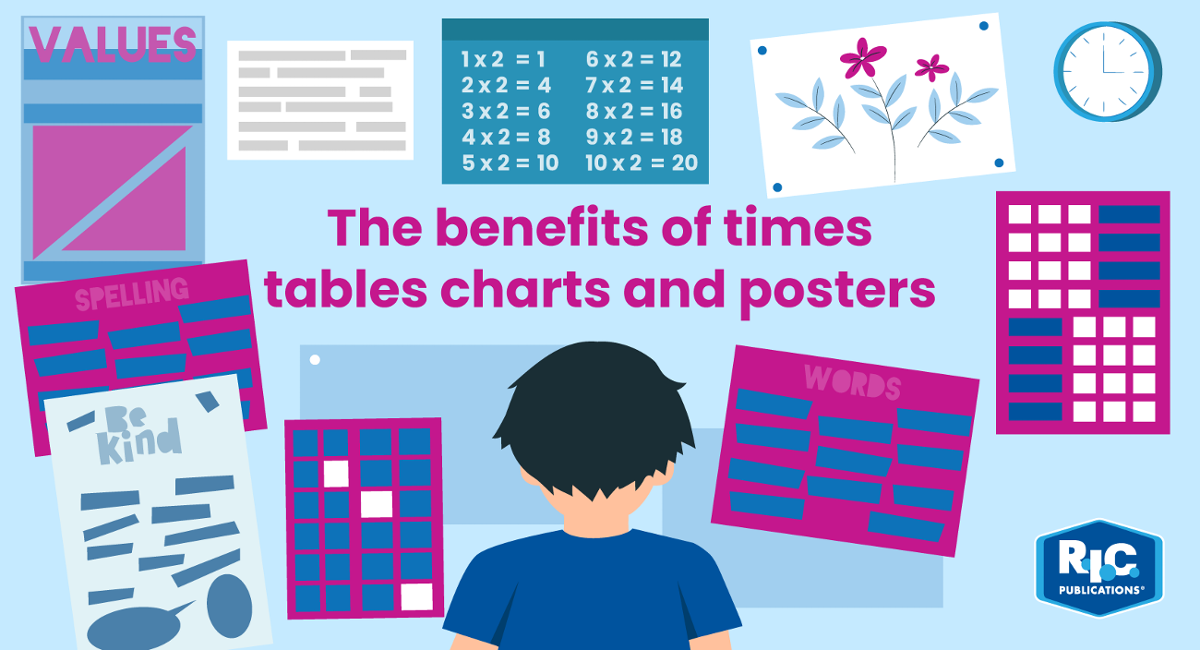- Friday 26 November 2021
- 0 Comments
In primary school, children are generally expected to learn their times tables. And as everyone who already has their times tables memorised knows, there is no easy way to do this except to just go over each one repeatedly until they're all firmly planted in your brain.
The fact is that without knowing times tables, children will have trouble with maths and find it difficult or even impossible to move to the next skill they need to learn. Even in this digital age, is it still necessary to have times tables charts all over the classroom walls? The answer is a resounding ‘yes’.
What is the best way to learn times tables?
The only way to learn times tables is to memorise them, even though many school children have tried their best to find other ways. In today’s digital world, children can easily go online or on a tablet and find times tables to study so they can memorise them more quickly.
But having times tables posters strategically placed on the walls of the classroom is beneficial, because they’ll be looking at the numbers every day and learning them without even realising.
The advantages of children learning their times tables with charts and posters
Having charts and posters with times tables on them within a classroom or even a child’s bedroom, can help that child learn multiplication tables a lot quicker. Again, memorising these tables is the only way to learn them, but the more children go over them, the easier it is for them to do this.
Here are some of the biggest advantages of children learning their times tables from charts and posters.
1. Improved mental maths skills
Being able to memorise times tables allows children to work out other maths problems in their heads, enabling them to do better in advanced types of maths. Learning to use their head to visualise certain maths problems is very beneficial, and by memorising times tables, they are also able to perform mental addition, subtraction and division.
This is always much better than them counting on their fingers or writing something down. It also helps them come up with answers much faster, which is important when they need to think on their feet.
2. Increased confidence
Let’s face it: reading, writing and arithmetic aren’t the only reasons why children go to school. They also go to build up their self-confidence so they can become productive members of society.
Having a multiplication tables chart helps children learn their times tables more quickly, increasing their self-confidence, and that confidence will help them when they go to take exams or any other type of assessment. This confidence also helps them do well in other subjects, including English, history, science and more.
3. Improved understanding of other concepts
Mathematics is the umbrella for a multitude of categories, including algebra, statistics and more, which is why the basic concepts learned in maths, such as multiplication, are crucial. The fact is that learning their times tables enables children to do much better when working with fractions, shapes, percentages and even sequences. Children will use times tables their entire lives, and they need this skill in order to move on to other subjects.
4. Visual examples that are easier to learn
Looking at charts and posters to learn may seem boring, but these charts and posters can be vibrant, giving children a memorable image of these tables, which helps their recall. It can also help them discover the link between certain times tables. For example, if they’re learning their eight times tables, they can apply the numbers when they go to learn their four times tables, because all they need to do is halve the numbers to know the answer. Children can see this and understand this concept better when they have charts and posters to look at every day.
5. Preparation for real life
Let’s face it; children are going to be using multiplication for the rest of their lives, so learning their times tables is vitally important. Even if children end up in a career that they think has nothing to do with maths, they’ll still use multiplication tables in their daily lives as adults.
This could range from purchasing stocks to calculations during tax time, all of which require knowing your multiplication tables, so children will never run out of ways to use this vital skill.
Where can you find these posters and charts?
R.I.C. specialises in resources and tools for teachers and parents, and we are the first place you should look when you want the best quality for your child or students. If space is limited, books are also a great alternative for visual learning of times tables and other concepts. You can view our full range of products on our website and search ‘times tables’ to view our book range specifically.
Regardless of what you decide to use, there is no doubt that children learn their multiplication tables much faster with visual tools that they can look at every day. Little by little, they’ll learn their times tables, which gives them a solid foundation on which they can base numerous other areas of mathematics.
